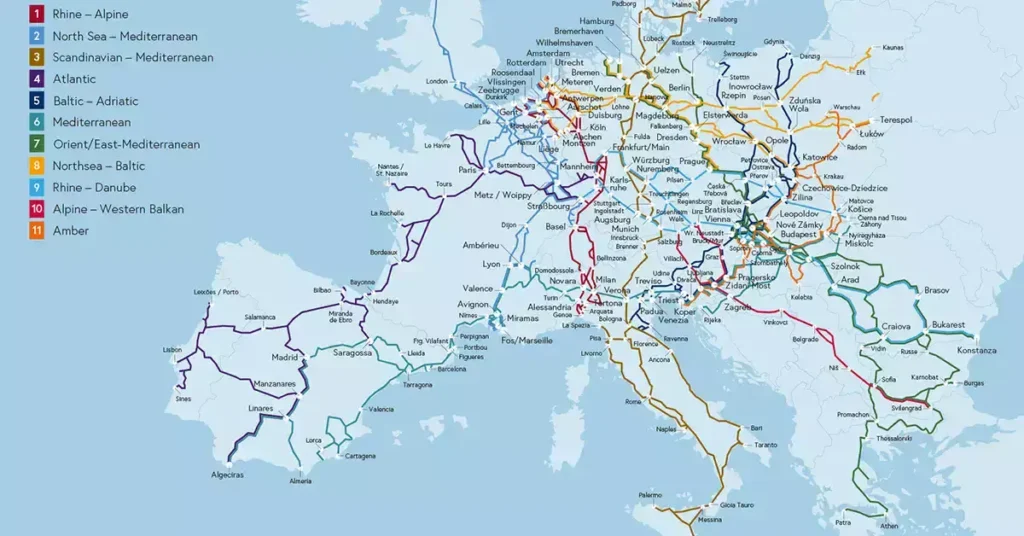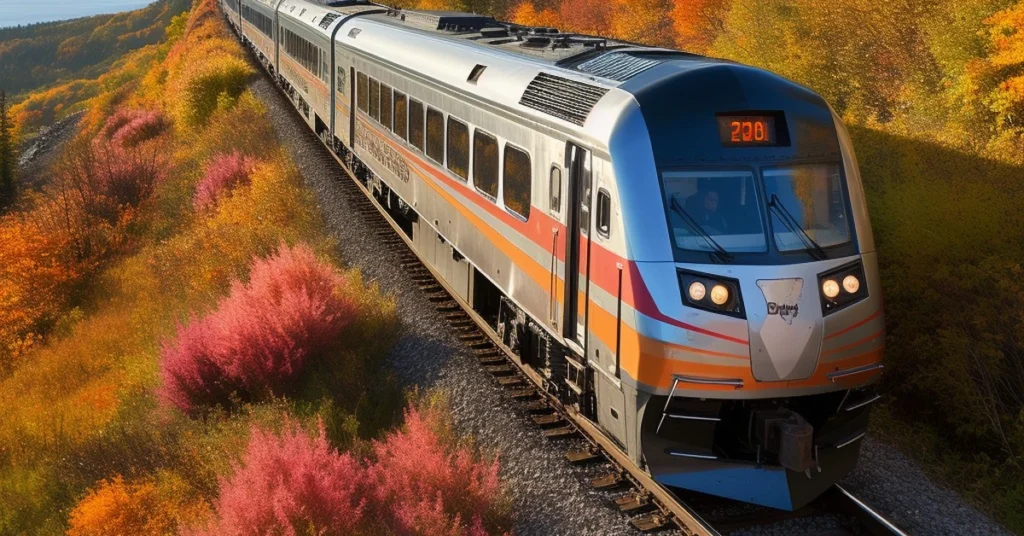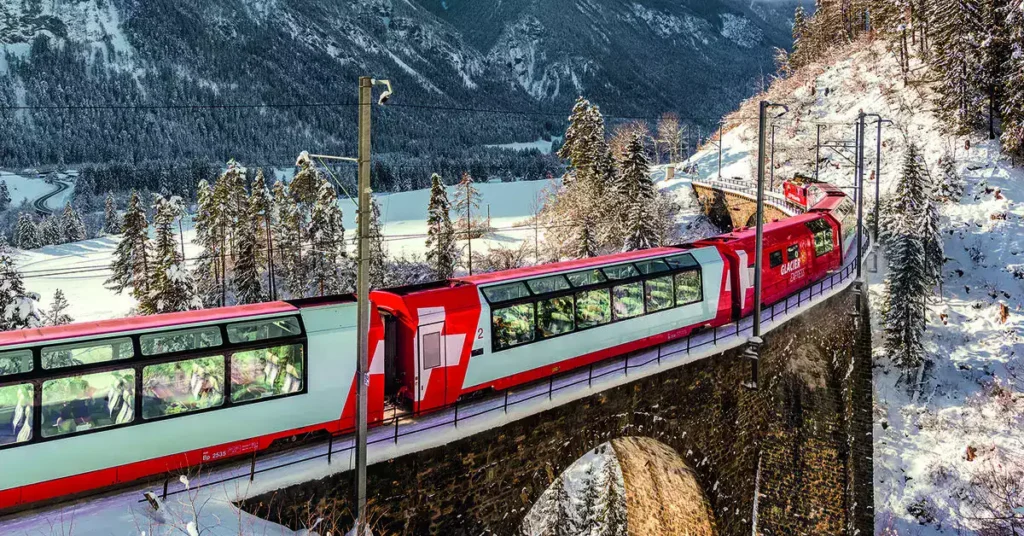Imagine gliding past rolling hills, charming villages, and historic cities, all from the comfort of a train seat. That’s the magic of train travel in Europe. Whether you’re new to this mode of transport or just need a refresher, this guide is here to help you navigate the ins and outs of European train travel with ease. I’ll cover everything from why train travel is such a fantastic choice to understanding the European train system and planning your perfect trip.

Why Choose Train Travel in Europe?
Convenience and Comfort
Train travel in Europe is incredibly convenient. Unlike airports, train stations are usually located in the heart of cities, so you can step off the train and be right where you want to be. No long security lines or arriving hours before departure. Just hop on, relax, and enjoy the ride. The seats are generally more spacious and comfortable than those on airplanes, and you have the freedom to move around, stretch your legs, or visit the dining car for a snack or meal.
Scenic Routes
One of the most compelling reasons to choose train travel in Europe is the scenic routes. Picture yourself traveling through the Swiss Alps on the Glacier Express, with panoramic views of snow-capped peaks and lush valleys. Or perhaps you’d prefer the coastal journey from Barcelona to Nice, where the train hugs the Mediterranean shoreline, offering stunning ocean views. These routes make the journey as enjoyable as the destination.
Environmental Benefits
If you’re environmentally conscious, train travel is a greener option compared to flying or driving. Trains have a lower carbon footprint per passenger and are a sustainable way to see the continent. By choosing trains, you’re helping to reduce greenhouse gas emissions and supporting a more eco-friendly mode of transport.
Connectivity
Europe’s extensive rail network connects major cities and small towns alike. Whether you’re planning to explore bustling metropolises like Paris, Rome, or Berlin, or quaint villages off the beaten path, trains can get you there. The connectivity allows for flexible travel plans, making it easy to hop from one destination to another with minimal hassle.

Understanding the European Train System
Types of Trains
The European train system might seem complex at first, but it’s quite straightforward once you get the hang of it. There are several types of trains you’ll encounter:
- High-speed trains: These include the Eurostar, which connects London to Paris and Brussels, and the TGV in France, which speeds across the country. These trains are fast, efficient, and very comfortable.
- Regional and intercity trains: These trains connect cities within the same country and are perfect for shorter journeys. They might not be as fast as high-speed trains, but they offer a great way to see the countryside.
- Night trains and sleeper services: If you want to save on accommodation and cover long distances, night trains are a fantastic option. They offer various sleeping arrangements, from reclining seats to private compartments.
Rail Passes
When considering train travel in Europe, you might wonder if a rail pass is the right choice for you. There are two main types of passes:
- Eurail Pass: This is available to non-European residents and offers flexible travel across 33 countries. It’s perfect if you plan to visit multiple countries.
- Interrail Pass: Similar to the Eurail Pass but for European residents.
A rail pass can be cost-effective if you plan to travel extensively by train. To use a pass, simply validate it before your first journey and make reservations for high-speed or night trains as needed.
Train Travel Ticketing
Buying train tickets in Europe is straightforward. You can purchase tickets online through websites like Rail Europe, at train stations, or via apps. Booking in advance often gets you the best prices. When buying tickets, you’ll notice differences between first and second class. First-class tickets offer more spacious seating and additional amenities, while second class is perfectly comfortable for most travelers.

Planning Your Train Trip
Research and Resources
Start by researching your destinations and the train routes that connect them. Websites like Seat61, Rail Europe, and the Eurail site provide comprehensive information on schedules and bookings. Guidebooks and travel forums are also great resources for tips and personal experiences.
Creating an Itinerary
When planning your itinerary, consider what you want to see and do in each place. Are you interested in history, culture, or perhaps the local cuisine? Choose destinations that excite you and are conveniently connected by train. If you’re unsure where to start, you might consider a popular route like Paris to Amsterdam, or Rome to Florence. Sample itineraries can help you visualize your trip, whether you have a week or a month to explore.
Booking Accommodation
When booking accommodation, look for places near train stations for convenience. This can save you time and make carrying luggage easier. Websites like Expedia.ca and Vrbo offer options for various budgets, from luxurious hotels to cozy guesthouses.

Tips for a Smooth Train Journey
Packing Essentials
Packing for a train trip is different from packing for a flight. You’ll have more space and freedom, but there are still a few essentials to keep in mind. Start with comfortable clothing, as you’ll be sitting for extended periods. Layers are key because temperatures can vary. Don’t forget a travel pillow and a light blanket for added comfort, especially if you’re taking a night train.
When it comes to luggage, check the specific guidelines of the train service you’ll be using. Generally, you’re allowed to bring a couple of pieces of luggage, but it’s wise to pack light. This makes it easier to handle your bags and store them in the overhead racks or designated luggage areas. A small daypack is also handy for keeping your valuables and essentials close at hand.
At the Station
Arriving at the train station can be a bit overwhelming, especially in larger cities. Plan to arrive at least 30 minutes before your departure time. This gives you plenty of time to find your platform and settle in. Departure boards can be a bit confusing at first, but they’re easy to navigate once you understand them. Look for your train number and final destination on the board, which will also show the departure time and platform number.
Platforms can change last minute, so keep an eye on the boards and listen for announcements. Once you know your platform, head there and wait for your train. In most European countries, trains are punctual, so be ready to board when it arrives.
Train Travel Onboard Tips
Once onboard, make yourself comfortable and enjoy the journey. Bring a good book, some snacks, and a refillable water bottle. Many trains have dining cars or trolleys with food and drinks, but it’s always nice to have your own supplies.
Safety and security are important, even on trains. Keep an eye on your belongings, especially in crowded stations or overnight trains. Use a luggage lock if necessary and keep your valuables within reach. If you’re traveling alone, introduce yourself to the train staff or fellow passengers. This helps build a sense of community and adds a layer of security.

Popular Train Routes and Destinations
Iconic Train Journeys
Europe is home to some of the world’s most iconic train journeys. The Glacier Express in Switzerland is a must-do, offering breathtaking views of the Swiss Alps. This slow-paced journey allows you to fully appreciate the stunning landscapes, from snowy peaks to lush valleys.
The Bernina Express, which travels from Switzerland to Italy, is another spectacular route. This journey takes you through the Swiss Engadin Alps, over the dramatic Bernina Pass, and down into the charming town of Tirano in Italy. It’s a UNESCO World Heritage route and for good reason.
For a touch of luxury and history, the Orient Express is the way to go. This legendary train travels from London to Venice, offering a glimpse into the golden age of rail travel. The opulent carriages, gourmet dining, and exceptional service make it an unforgettable experience.
City Hopping
If you prefer city hopping, European trains are perfect for quick and comfortable travel between major cities. Paris to Amsterdam is a popular route, taking just over three hours on the high-speed Thalys train. You can enjoy the beauty of two iconic cities without the hassle of airports.
Madrid to Barcelona is another fantastic route. The high-speed AVE train whisks you between these two vibrant cities in under three hours. It’s a great way to see Spain’s contrasting cultures and landscapes.
For those exploring Italy, the journey from Rome to Florence is a classic. In just 90 minutes, you can travel from the heart of ancient Rome to the Renaissance beauty of Florence. It’s perfect for a day trip or a longer stay in both cities.

Frequently Asked Questions
What to do if you miss a train
Missing a train can be stressful, but it’s usually not the end of the world. Head to the ticket office as soon as possible. In many cases, you can get a seat on the next train, especially if you have a flexible ticket or a rail pass. If you’ve booked a specific train, there might be a small fee to change your ticket.
Understanding train cancellations and delays
Train cancellations and delays do happen, although they are less common than with flights. Keep an eye on the departure boards for updates. If your train is canceled, staff will usually help you find an alternative route. Delays are often communicated clearly, so just be patient and enjoy a coffee at the station.
Language barriers and how to navigate them
Language barriers can be a concern, but they’re rarely a major problem. Most train stations have signs in multiple languages, and train staff often speak English. Carry a small phrasebook or use a translation app to help with any tricky situations. A friendly smile and a bit of patience go a long way.

In Conclusion
Train travel in Europe offers an incredible way to see the continent. From the convenience and comfort to the stunning scenic routes, there’s so much to love. Whether you’re hopping between cities or embarking on an iconic journey, this beginner’s guide to train travel will help you navigate the system with ease.


